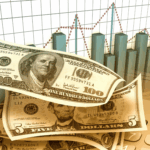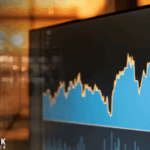Despite the anticipation of eased inflation, consumers may still face financial pressures in the coming months. The latest report from the Federal Reserve Bank of New York suggests that although inflation growth is expected to decline, prices will still rise over the next year. This continued increase in costs spells potential financial tension for average American consumers who keep an eye on the economy’s fluctuations. New insights reveal additional layers to this complex economic situation.
Historically, tracking inflation through the Federal Reserve Bank of New York surveys has provided mixed signals about consumer expectations. A notable difference this time is the explicit prediction of increased food prices, which reflects immediate consumer concerns and spending habits. Prior data demonstrated variable inflation perceptions, but the focus on essential goods pricing lays bare a critical area of stress observed presently.
How Do Inflation Expectations Compare?
According to the Federal Reserve Bank of New York, the average inflation expectations for the next year have reduced to 3.2%, down by 0.4 percentage points. This drop offers a measure of optimism, despite the central bank’s typical goal of a lower target rate remaining unmet. The three-year outlook sees a decline to 3%, while expectations for five years from now have fallen to 2.6%. Despite these reductions, the numbers remain above the preferred benchmarks.
Are Consumers Feeling the Effects?
Notably, consumer sentiment indicates that the tangible relief might not mirror the slightly lowered expectations. Expected food price inflation jumped by 0.4 percentage points to 5.5%, marking a significant hike since October 2023. The persistent rise in food prices underlines the uneven impact of potential inflation relief across different expense categories.
In contrast to potential price relief, consumer spending plans have somewhat contracted. The survey reveals that projected nominal household spending growth fell to 5%, marginally above the prior 12-month average. Additionally, expectations around accessing credit have dwindled, with only 10.6% of respondents optimistic about easier credit availability next year.
Household income growth predictions show a modest increase, with a slight rise to 2.7%. However, this growth lags behind the expected inflation rate, indicating a squeeze on purchasing power. This accentuates the observed gap between income progression and rising living costs.
Consumers’ perception of inflation is often tied to their daily purchase experiences rather than official metrics, states Karen Webster
of PYMNTS, highlighting a disconnect between measured inflation and consumer experience.
Business responses to tariff-related uncertainties continue to compound the economic landscape. Goods and services firms, facing increased costs, report intentions to escalate prices further. This strategic reaction illustrates a trend where external economic pressures trickle down, affecting consumer prices.
Although reports suggest a deceleration in inflationary growth might offer some relief, price adjustments and consumer expectations frequently diverge from official statistics. With continually evolving market dynamics, staying informed about the intricate play of factors influencing inflation and consumer spending becomes imperative for navigating future financial landscapes.










